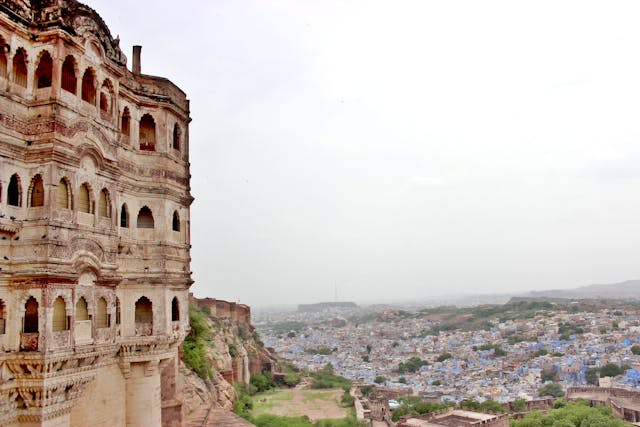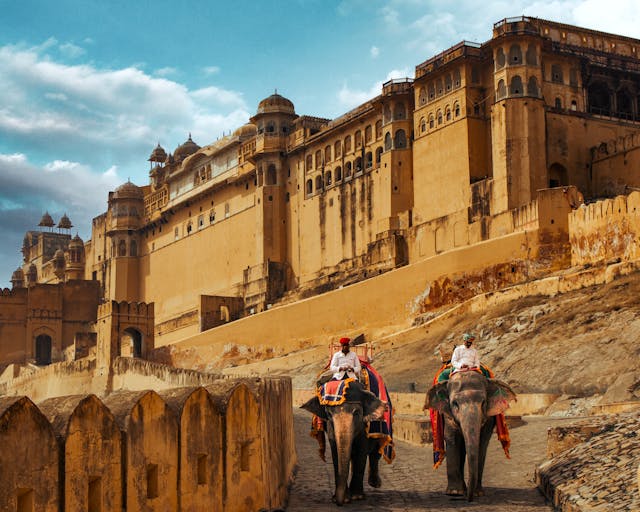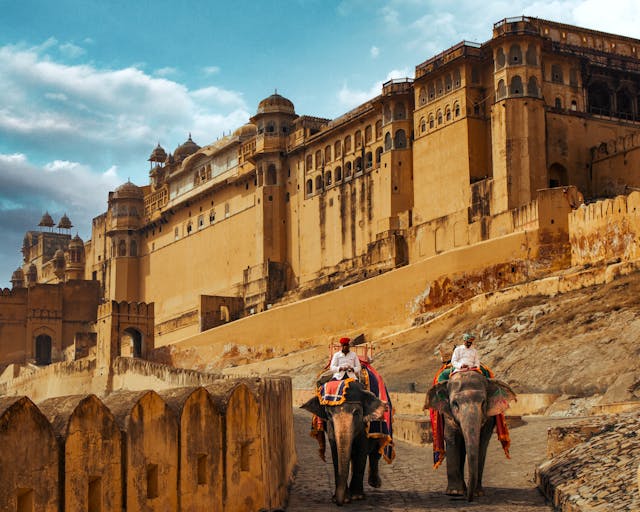Jaipur, the capital city of Rajasthan, is renowned for its rich cultural heritage and stunning architectural marvels. Prominent among its monuments is the Hawa Mahal, also known as the “Palace of Winds,” a five-story structure with 953 small windows, designed to allow royal ladies to observe street festivals while remaining unseen. Amber Fort, a majestic fortress with intricate Hindu and Mughal architectural styles, sits atop a hill overlooking Maota Lake. The City Palace, a sprawling complex of courtyards, gardens, and buildings, reflects a blend of Rajasthani and Mughal architecture. Jantar Mantar, an astronomical observatory with the world’s largest stone sundial, showcases the scientific prowess of the 18th-century Rajputs. Lastly, the Nahargarh Fort offers breathtaking views of the city and was a retreat for the royal family, adding to Jaipur’s allure as a city of historical and architectural grandeur.

Amber Fort

Amber Fort, located in Amer, just 11 kilometers from Jaipur, is a stunning example of Rajput architecture. Constructed in the late 16th century by Raja Man Singh I, the fort is known for its artistic Hindu elements, grand ramparts, and series of gates and cobbled paths. The majestic fort overlooks Maota Lake, providing a picturesque backdrop. Key attractions within the fort include the Sheesh Mahal (Mirror Palace), adorned with intricate mirror work, the Diwan-e-Aam (Hall of Public Audience), and the Diwan-e-Khas (Hall of Private Audience). The fort’s beautiful courtyards, palaces, and temples reflect a rich blend of Mughal and Rajput styles, making it a significant historical and architectural landmark in Rajasthan.

